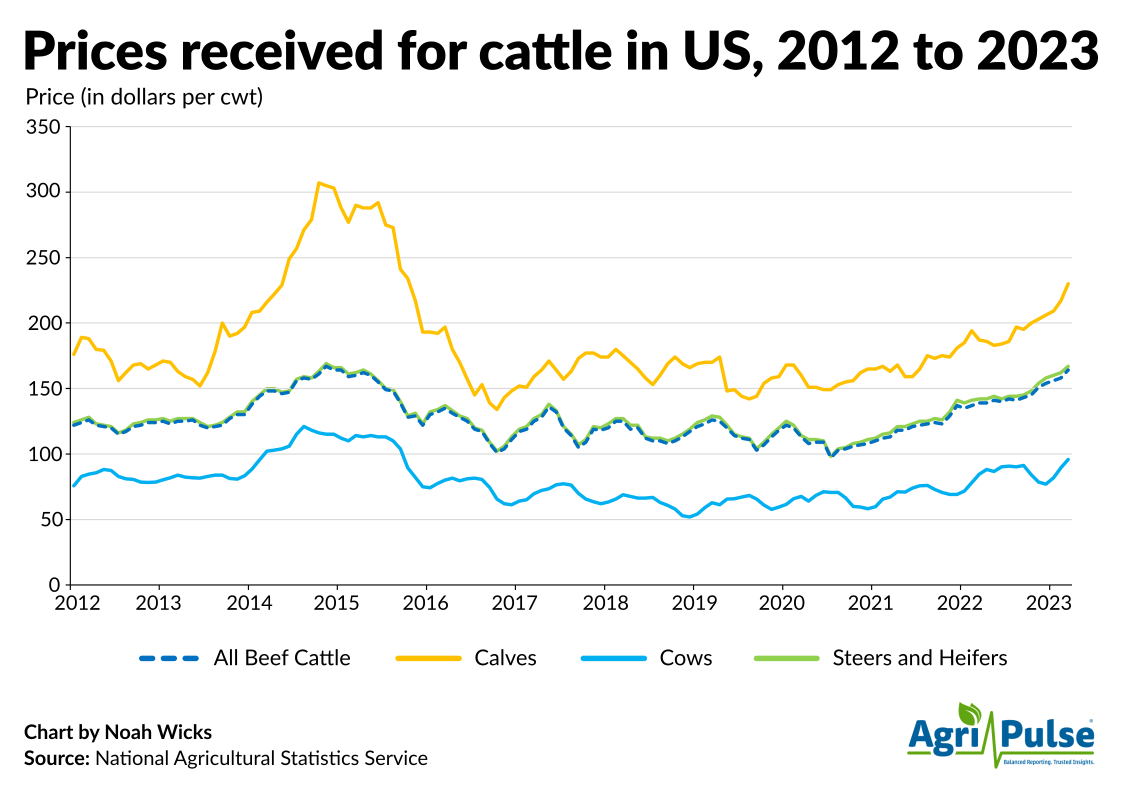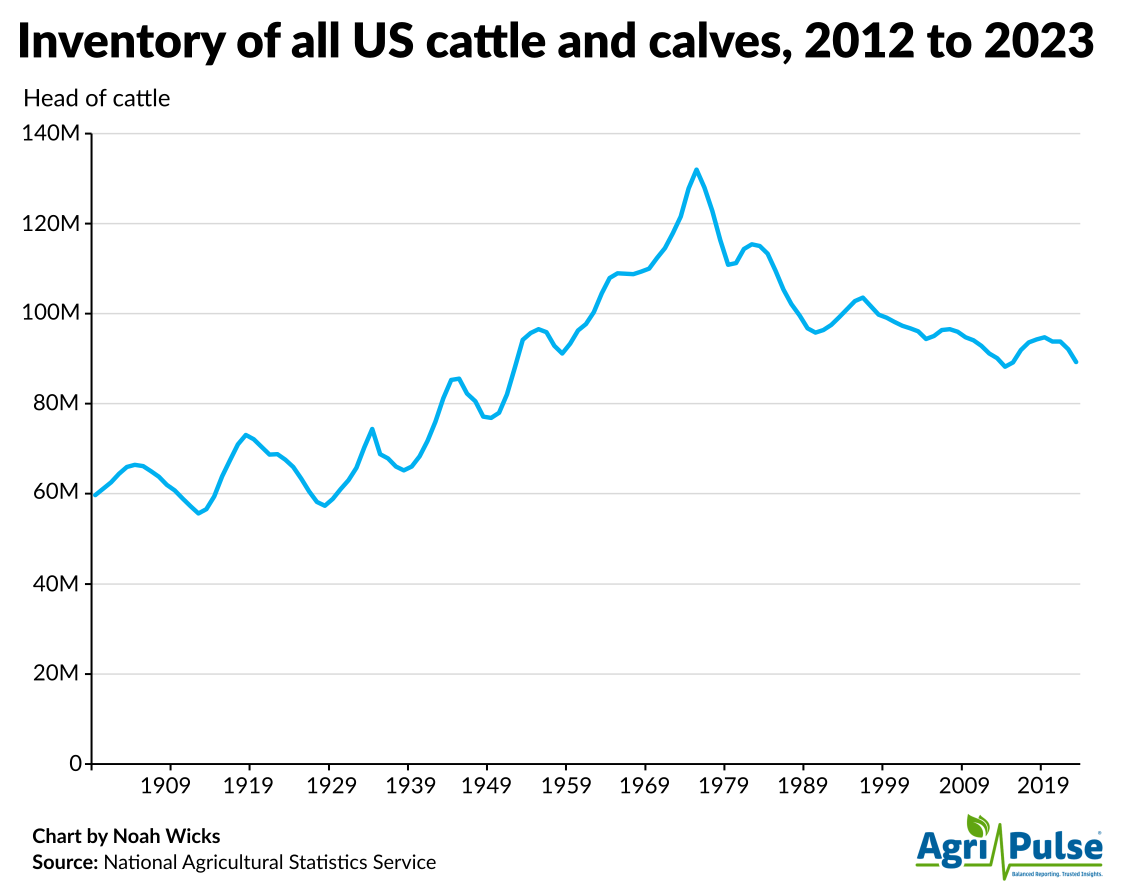Shifts in cattle, pork and poultry markets may result in tough times ahead for processors, with meat giant Tyson Foods already reporting losses.
Cattle inventory declines have pushed prices higher, while wholesale pork prices are declining as producers face higher production costs, according to written testimony from North American Meat Institute Vice President Bryan Burns at a House Ag Committee hearing last week. Tyson Foods CEO Donnie King said during a recent earnings call that prices for boneless chicken breast meat, tenders and wings are more than 50% cheaper than they were last year.
“I can't remember a time when our business faced the highly unusual situation that we're currently seeing, where all three of our core protein categories, beef, pork and chicken, are experiencing market challenges at the same time,” King said.
Tyson lost $46 million in its most recent quarter, compared to a profit of more than $1.1 billion in the same timeframe a year ago. The company reported an adjusted operating income of just $8 million in beef during that quarter, far below the $638 million it earned that quarter a year earlier, while posting losses of $31 million in pork and $166 million in chicken.
The U.S. beef herd shrank to only 89.3 million head of cattle and calves in January, its lowest since 2015 and 3% below January 2022. The cutbacks, which Oklahoma State University Economist Derrell Peel said were partially made due to drought, have resulted in increased beef prices and more competition for animals between processors.
“The bottom line is the industry is smaller than it needs to be,” Peel told Agri-Pulse. “We have a smaller cow herd than we need, and that's going to affect production now for the next several years.”
At the same time, cattle prices — which were low in 2020 and 2021 — have significantly increased. According to recent testimony from National Cattlemen’s Beef Association President Todd Wilkinson at a House Agriculture Committee hearing, the weighted average cash price of fed cattle reached $173.93 per hundredweight (cwt) earlier this month. Wilkinson pointed out that this was far higher than when he testified before the committee in October 2021, when the average cash price was $122.55 per cwt.
“I would be remiss if I did not underscore that the entirety of the price improvement we are currently seeing has occurred without the enactment of market-altering legislation,” Wilkinson told lawmakers. “Claims suggesting cattle market conditions would never again favor producers unless Congress intervened with massive government programs have been undeniably proven false.”

NCBA argued against efforts in recent years to require certain percentages of live cattle transactions be conducted on the open cash market rather than through private alternative marketing agreements between the producer and purchaser. Proponents argued the legislation would improve price transparency in the sector.
Rich Nelson, an economist and the chief strategist at Allendale, told Agri-Pulse that disparities between processing capacity and U.S. cattle inventory will likely linger for at least two years while producers work on restocking their herds. Low inventories will likely continue to fuel losses from packers, which could potentially impact some plants that have construction underway.
Nelson said he heard of expansion or construction plans for at least eight plants last year, which he said may be disrupted by current markets. Peel also said the new plants would face steep challenges, particularly the low inventory of livestock and an increase in building costs, which he said have likely doubled since many of the original announcements.
Don’t miss a beat! It’s easy to sign up for a FREE month of Agri-Pulse news! For the latest on what’s happening in Washington, D.C. and around the country in agriculture, just click here.
“I think they are probably going to struggle under the best of circumstances,” Peel said of the plant projects.
Peel said some of the project owners may wait to build until after cattle supplies begin to trend higher.
Sarah Little, a spokesperson for the North American Meat Institute, said small and mid-size beef projects supported by USDA funding could also be impacted. Last year, the Biden administration announced $1 billion to finance new meat processing facilities and workforce through several programs.
"I think what you're going to see some capacity constrict, but there's all this capacity in the pipeline that's coming online," Little said. "[It] remains to be seen which projects will come online and when they'll be operating, and where they're going to get their livestock."
High feed costs have also impacted all three protein sectors, with King mentioning on the Tyson earnings call that the company saw its feed ingredient costs expand to $145 million. University of Arkansas economist Jada Thompson said feed costs for chickens are around 23% higher this year than last year.

Highly pathogenic avian influenza has also impacted poultry production, though its impact has been greater for laying hens than for broilers. Only about 4% of the 58 million birds infected were broilers, while around 75% were layers and 16% were turkeys, Thompson said.
In an email to Agri-Pulse, Iowa State University Economist Lee Schulz said federally inspected hog slaughter numbers increased 1.5% from a year ago, while prices for hogs from producers in Iowa and Minnesota averaged $77 per cwt in the first quarter of 2023, down 14% from last year. At the same time, costs are estimated to have increased around 50% since 2020, Schulz noted.
Nelson said he expects feed costs to decrease before the end of the year. He also said expected closures of processing plants in California, Minnesota and Quebec could potentially improve margins for existing processors.
“We could potentially lose U.S. processing and that would help the pork processor margins,” Nelson said.
California's Proposition 12 is also expected to have impacts on pork, Nelson said. Pork from hogs not raised in facilities compliant with the statute will not able to enter California, which accounts for around 15% of U.S. pork demand, when the law takes effect in July.
For more news, go to www.Agri-Pulse.com.


